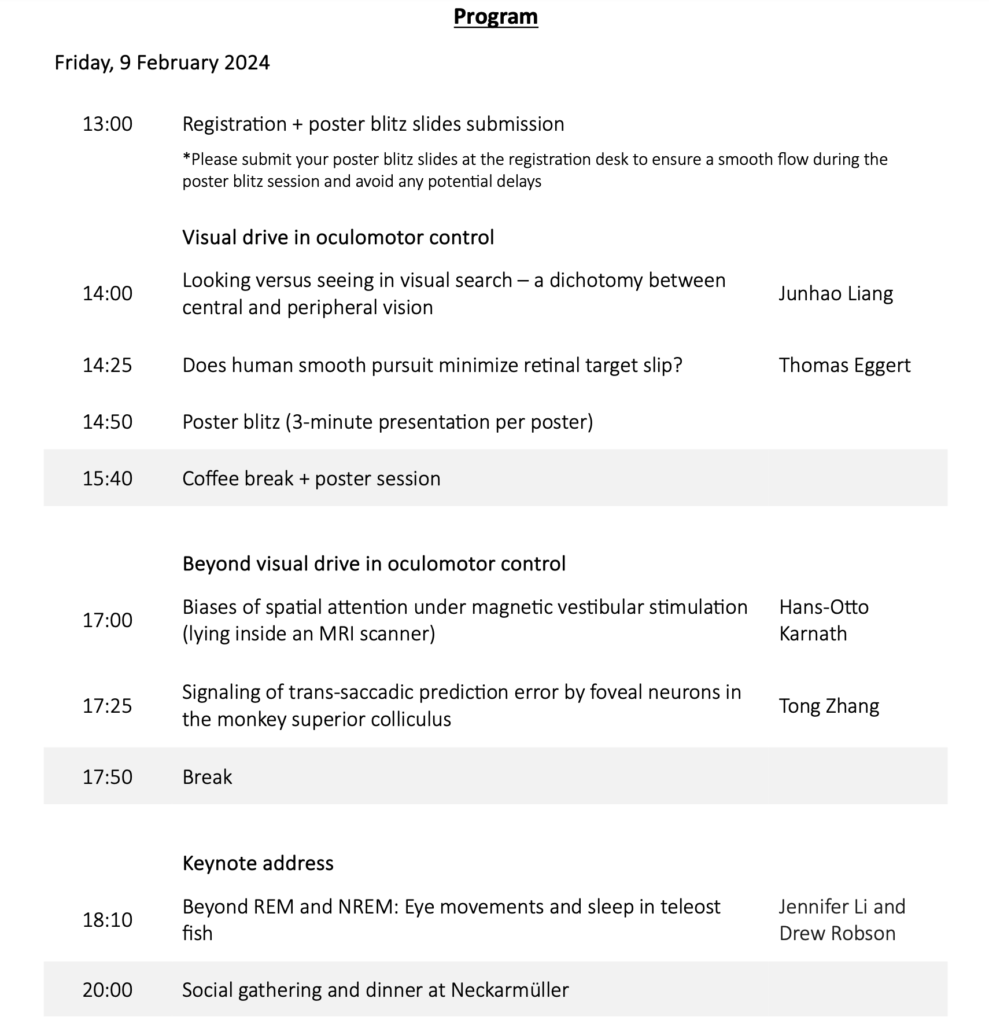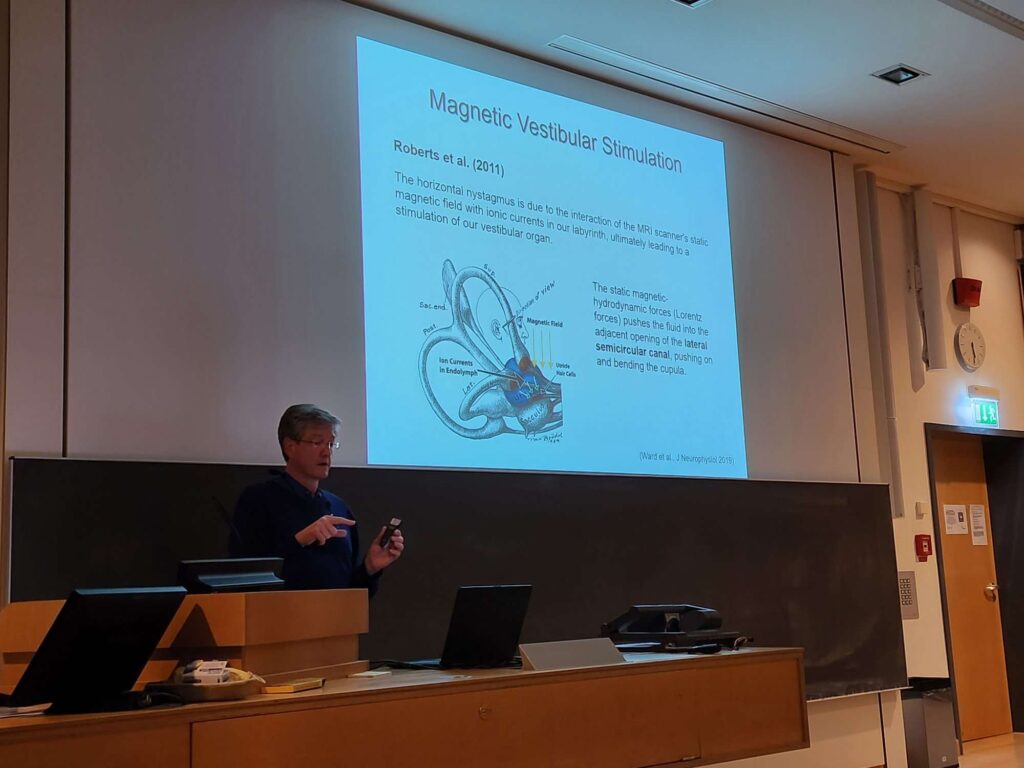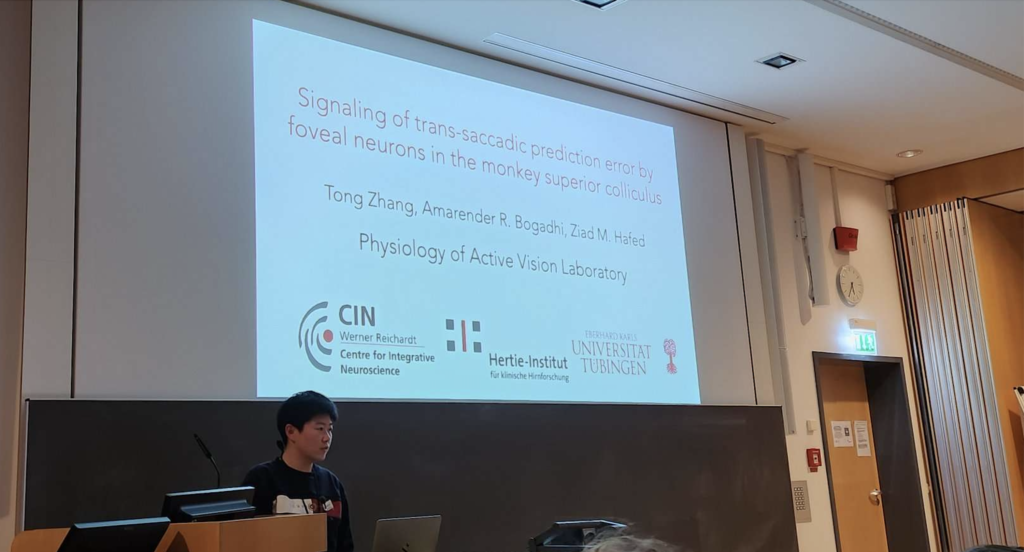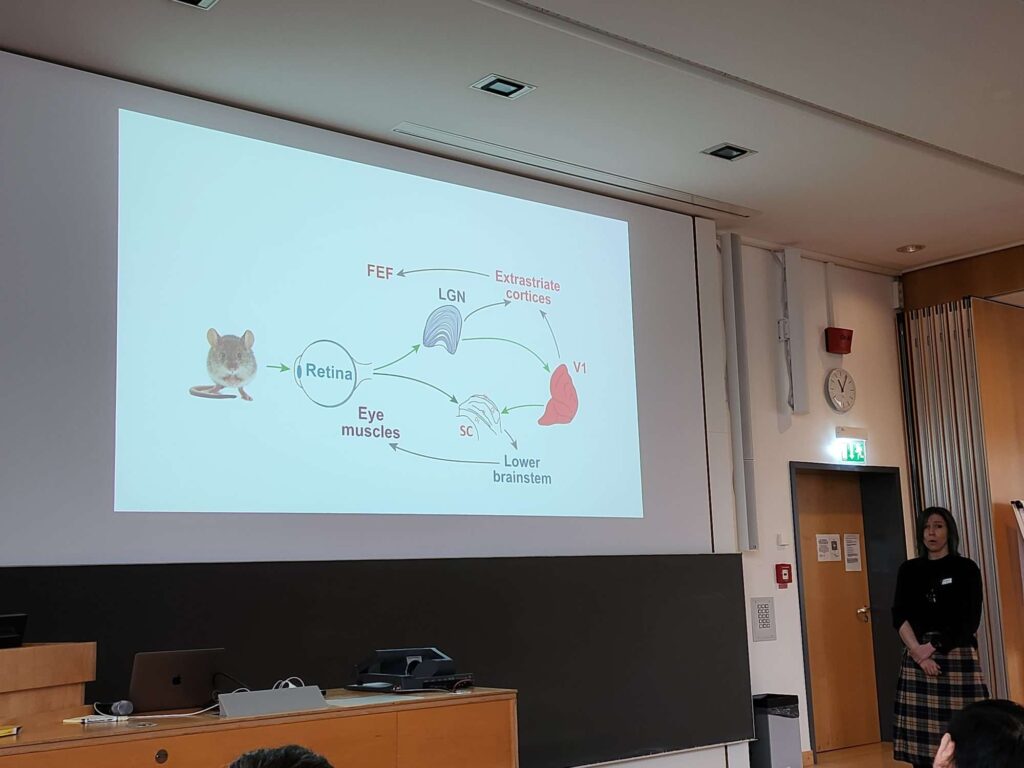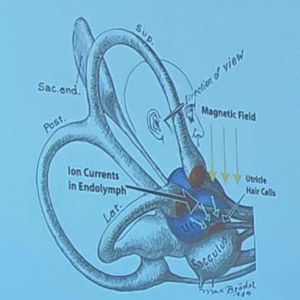
We hosted this year’s annual Oculomotor and Vestibular System Meeting. This is a meeting that originated by neurologists and scientists in the Münich, Zürich, and Tübingen regions who were interested in the oculomotor and vestibular systems. The meeting rotates between these three locations annually, and it was our turn to host it this year. The meeting usually attracts scientists and clinicians from more than just the three cities, with participation even from some other German and European cities.
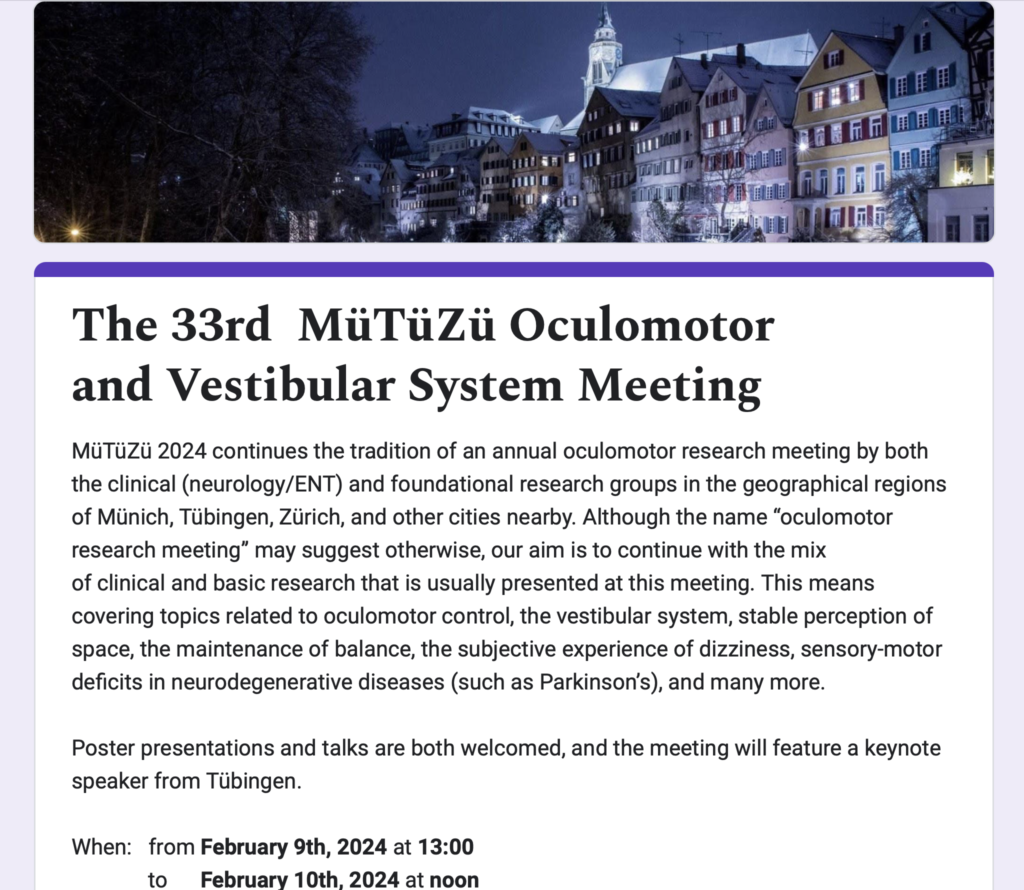
Over the years, the meeting has grown to include a diversity of techniques, and it is a very interesting opportunity for closer interactions between clinicians and fundamental science researchers. On the one hand, fundamental science researchers become aware of the clinical constraints of not just patient symptoms/outcomes, but also of eye movement measurement needs and challenges. On the other hand, clinicians hear about the latest research endeavors on sensation, oculomotor control, and vestibular processing, often in animal models. This year, there have been studies in macaque, marmosets, and fish animal models, besides the human studies.
The meeting is also a good opportunity for students to engage with senior scientists and hone their presentation and scientific communication skills.
For a keynote address, we hosted Jennifer Li and Drew Robson from the Max-Planck Institute for Biological Cybernetics, and they described their attempts at exploring whether larval zebrafish exhibit rapid eye movement (REM) and non-REM sleep stages.
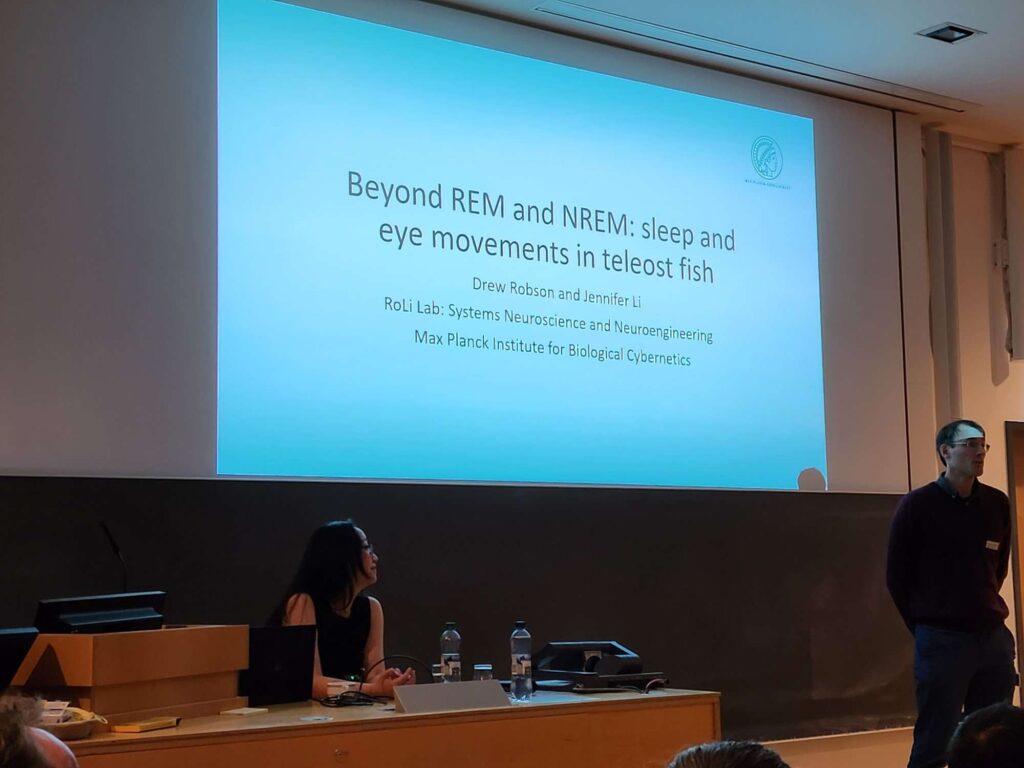
From our lab, we had several poster and talk presentations, covering our interests not only in sensory drives for eye movements, but also sensory consequences of these eye movements. Tanya described her latest work on the roles of different visual pathways in active vision. Carlotta continued this theme by describing the similarities and differences between the superior colliculus (SC) and primary visual cortex (V1) visual responses. Nikita then moved to study how high level scene grammar is processed in visual search. And, on the other end, Tong and Matthias looked into potential compensations for the disruptive effects of saccades on vision. Tong demonstrated that foveal SC neurons receive a prediction about the peripheral appearance of a saccade target, and Matthias continued our investigations of saccadic suppression, like in our retina studies from 2020 and 2022. He compared SC and V1 suppressed visual responses by saccades. He finds interesting correlates with and deviations from the perceptual phenomenon of saccadic suppression, and also from retinal processing in mice. Finally, Julia explored perceptual correlates of saccadic suppression, but with tiny microsaccades.
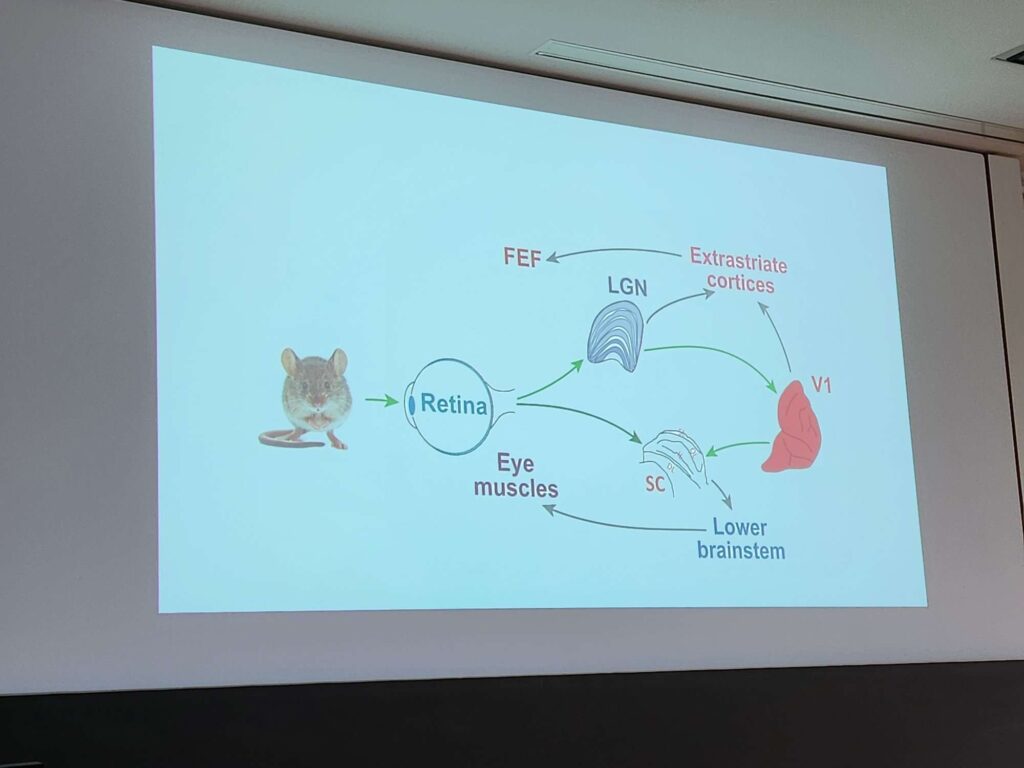
Interestingly, other participants (like the Arrenberg lab) described studies of saccadic suppression in larval zebrafish. So, we had a chance to discuss our collaboration with their lab on this topic in great depth.
The program of the meeting appears below, along with some pictures.

